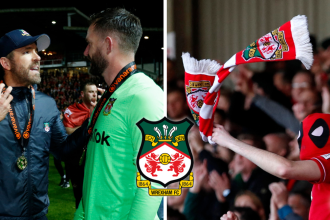da brdice: The idea of playing the Ranji Trophy at neutral venues found a generally favourable response at the captains’ and coaches’ meeting in Dharamsala
da mrbet: Nagraj Gollapudi in Dharamsala23-Jun-20161:44
‘Neutral venues will make contests fair for all teams’ – Parthiv
Indian domestic cricket is on the cusp of a significant change as the idea of playing the entire Ranji Trophy at neutral venues found a favourable response at the captains’ and coaches’ meeting in Dharamsala. A final decision on the matter will be taken at the BCCI’s working committee meeting on June 24.Issues with the SG ball, umpiring raised
The issue of which balls to use in domestic cricket, which has been discussed at past meetings, was once again brought up for discussion on Wednesday. The SG balls, commonly used in domestic cricket, are known to lose shape, forcing teams to change the ball frequently.
“The problem is you change the ball so frequently,” a coach said. “Say if you are working on a certain ball, and suddenly you change it, you lose the advantage. A D-shaped ball does not offer you the same kind of swing and turn a normal-shaped ball offers. It won’t land on the seam and the bowlers won’t be able to do what they want to do. You don’t have the same feel in the hand when the ball is out of shape.”
When BCCI president Anurag Thakur asked what could be the remedy, a few of the bowlers present at the meeting asked for Dukes balls. But considering that the number of balls required is so high, Thakur observed that it would be very difficult for the BCCI to procure Dukes balls for an entire domestic season. He said that the BCCI had spoken to SG and certain changes were being made to the ball that would allow it to hold its shape for longer.
Another problem that was brought up at the meeting was the quality of domestic umpiring. The BCCI was told that the issue was aggravated on spinning and underprepared pitches where the umpires committed mistakes consistently. One of the suggestions put forward was the deployment of a referral system in domestic cricket.
The general consensus after the captains’ and coaches’ meeting, which is part of the inaugural BCCI conclave, was to try the new idea of playing on neutral pitches as that could facilitate the growth of Indian cricket and help players adapt to various conditions and challenges.”Personally, I feel that playing at neutral venues is really good,” Gujarat captain Parthiv Patel said at the end of the meeting. “You want every domestic player to be ready for the international level.”Since BCCI technical panel head Sourav Ganguly first mooted the neutral venue concept, players and coaches on the domestic circuit have come out with mixed responses. Those same concerns were raised once again at Wednesday’s meeting, which was chaired by BCCI president Anurag Thakur, who is also the president of Himachal Pradesh Cricket Association. Thakur had asked captains and coaches from all five zones to put forth their views so the BCCI could use the feedback when making its final decision.According to some of the participants at the meeting, it was mentioned that for many decades teams had played on a home-and-away basis and some teams had taken unfair advantage by offering underprepared pitches. Hence, they argued, there was no harm in trying something new.Former India fast bowler and current Vidarbha coach Paras Mhambrey appeared to share this view. “If you speak about home advantage, then many a time it has not been used in the right manner. Is it good for cricket in general and for the youngsters coming through to play on such tracks? Are they growing or not? That is a call we have to take.”According to Mhambrey, a majority of states were in favour of playing on neutral pitches. “There are pros and cons and there are going to be concerns, but what is important is we need to find a balance. When you look into the whole structure, you have to by and large look at the growth of Indian cricket in general. I agree it is going to be a different challenge.”Maybe you are taking the home advantage [away], but what has happened in the last year isn’t good for cricket. Maybe when you go on tours, the conditions are not in your hand, [or] in your favour, so you [need to adapt] to different situations and conditions. By and large, for Indian cricket to prosper and have quality players coming through the system, that can be a positive step.”Some of the doubts raised at the meeting included the concern that players would be away from home for longer periods of time, and also that young players would miss out on watching quality cricketers from their home state.Playing at neutral venues as such is not a new concept: Ranji knockout matches have been played at neutral venues. But prominent players like Sachin Tendulkar did not favour the idea mainly because it deprived teams of home support.However, Parthiv felt the home crowd was not a determining factor. “A lot of people come and watch home players, but that is not a large issue. The large issue is on the field. Everyone was more or less on the same page where they were all keen to play on a neutral wicket and try and challenge themselves.”Delhi coach Vijay Dahiya agreed. “It is a good initiative,” he said. “As a coach or as a team you are always looking forward to a challenge and neutral venue is going to be a challenge. There is no doubt about that. Last year we had T20 and one-day cricket was not zonal. We played it in groups. Everyone enjoyed that new format, which brought freshness. So there is no harm in trying the neutral venues concept.”One thing that everyone agreed on at the meeting was it was wrong to play on underprepared or sub-standard pitches where matches got over in under two days. Thakur said that the BCCI would guarantee much more competitive pitches and would utilise the experts’ views to make domestic cricket better.






